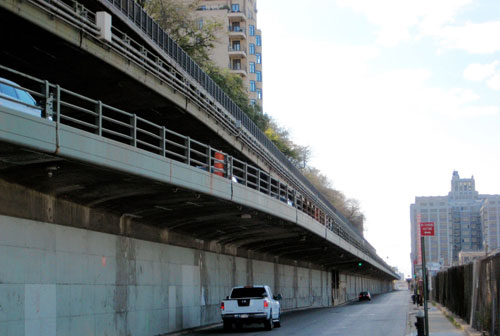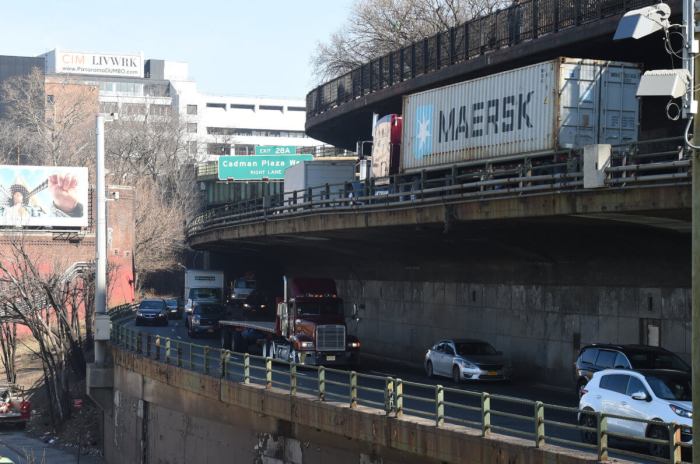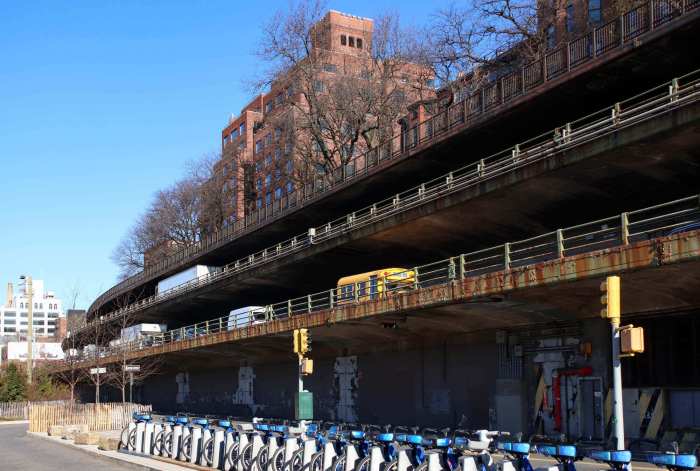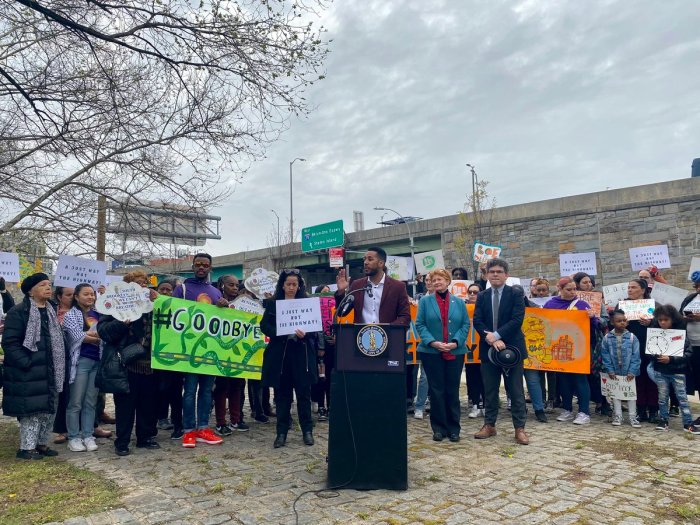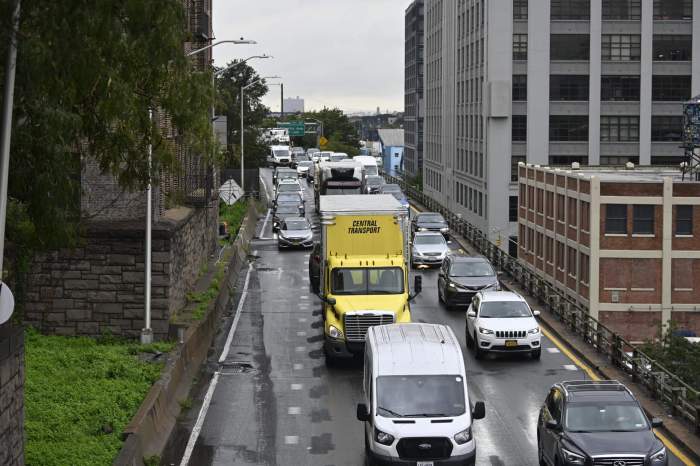It’s a big trucking deal.
Thousands of big-rigs may be forced to rumble along Brooklyn Heights streets if state lawmakers don’t pass legislation to accelerate the reconstruction of a decrepit stretch of the Brooklyn–Queens Expressway that runs through the nabe, according to city transit honchos, who warned locals at a Monday meeting that the roadway will soon be unable to hold the heavy vehicles.
“The corrosion in the rebar will have reached a point where the capacity of the structure to carry trucks is going to be reduced,” said Tanvi Pandya, a project manager overseeing the repairs. “We’re really concerned that we don’t miss that. We want to stay ahead of that curve.”
Department of Transportation engineers cracked open the expressway’s triple cantilever — which runs beneath Brooklyn Heights’ fabled promenade and above Furman Street — last year, and subsequently discovered that the massive trucks that cruise it daily will cause the three-tiered structure to start rapidly deteriorating in 2026, Pandya said, forcing the city to repeatedly fix problems that pop up as the cantilever crumbles or redirect the four-wheelers to local streets including Atlantic Avenue, Jay Street, and Flatbush Avenue.
“At that point, we can either keep letting the trucks on — which means we’re going to have bigger and bigger pot holes, bigger issues, and more emergency shutdowns — or we start diverting truck traffic,” she said. “Which all of you know is not the way we want to go because there’s nowhere for the trucks to go.”
The city is coughing up $1.9 billion to fix a 1.5-mile stretch of the 70-year-old span between Atlantic Avenue and Sands Street, and workers plan to begin the reconstruction in 2024 and wrap it sometime after 2028.
But local transit honchos are pushing lawmakers in Albany to pass legislation that would speed up the repairs by authorizing “design-build,” a process that would solicit one bid for the project’s design and construction instead of hiring unique firms for each phase, and cut about $113 million from the job’s total cost.
And if Gov. Cuomo approves the so-called streamlined process for the city-run project by this spring, work on the expressway could begin as soon as 2021 and end before 2026, according to the transportation department.
Cuomo previously allowed several state-run agencies to use design-build, including the New York State Department of Transportation, which implemented the process to construct the new Kosciuszko Bridge.
But he has yet to sign off on legislation approving its use by city agencies on infrastructure projects, despite Mayor DeBlasio’s and other local pols’ demands that he do so.
State Sen. Marty Golden (R–Bay Ridge) introduced legislation in Albany’s upper chamber last spring that would have authorized the city to use design-build on eight projects, including the Brooklyn–Queens Expressway reconstruction, but it never made it to the governor’s desk.
Golden told The New York Post that he plans to reintroduce the bill as soon as possible, however, and his colleague, the former assemblyman and newly elected state Sen. Brian Kavanagh (D–Brooklyn Heights), said he would urge his fellow senators to support the legislation, though he could not speak to the likelihood of it becoming law.
“I can’t speak for the other parties in this — I can tell you it’s going to be one of my top priorities,” Kavanagh said. “My new role in the Senate is to make sure everybody in Albany understands this is something we need to get done.”
City transit honchos begged locals to demand their state legislators pass the design-build legislation at Monday’s meeting, and the leader of a Brooklyn Heights civic group said he is optimistic that Albany lawmakers will do the right thing — and can’t imagine just how dramatically thousands of trucks plowing through the nabe’s narrow side streets would affect the enclave if they do not.
“This would just take a highly problematic situation and make it absolutely unbearable,” said Peter Bray, who heads the Brooklyn Heights Association. “We’re in big trouble because they are talking about 14,000–16,000 trucks a day that use the roadway, and if they have to be diverted and even half of them use streets in Downtown and Brooklyn Heights, there’s no roadway capacity to absorb that traffic.”


